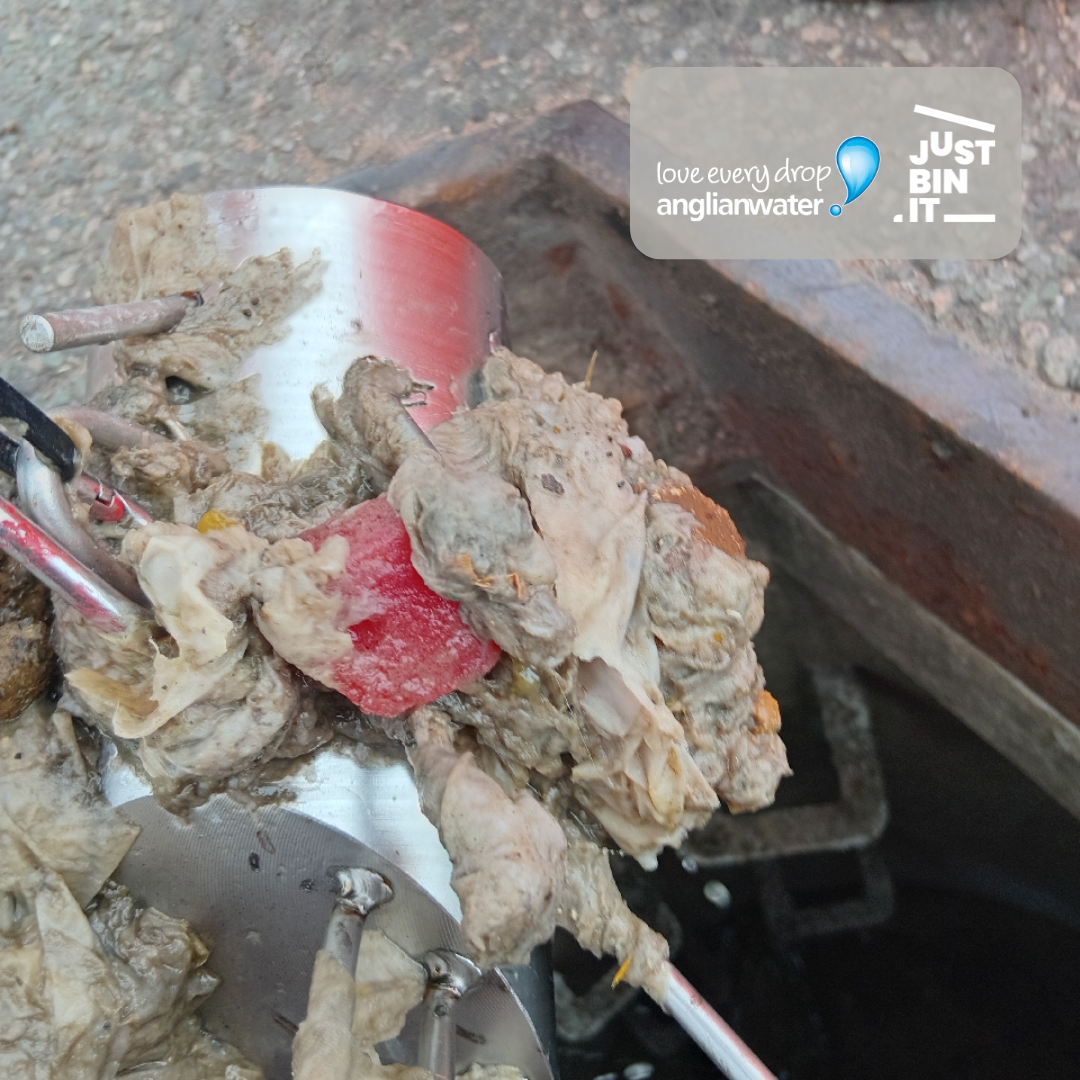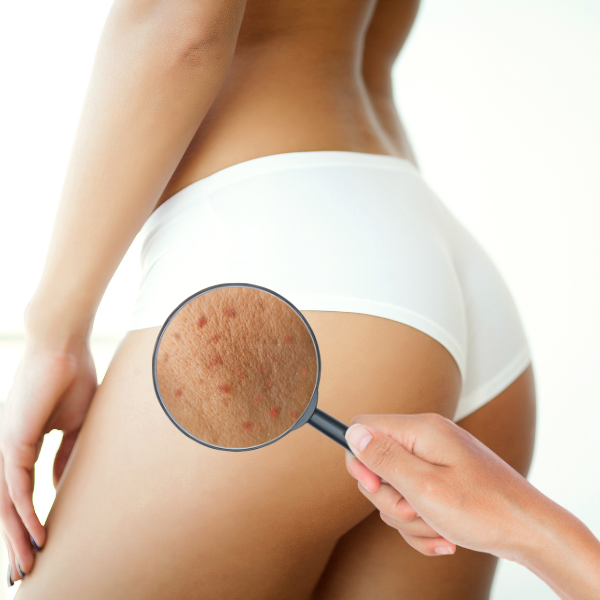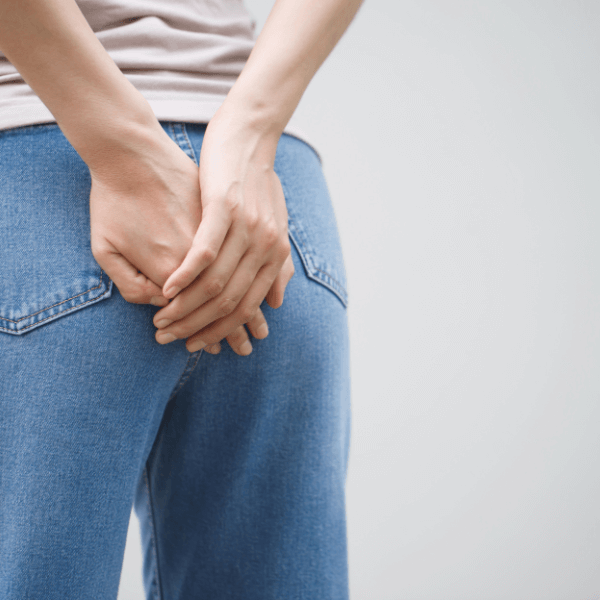The Anatomy of the Anus: A peer into the rear

The Anatomy of the Anus: A peer into the rear
It's understandable to not have a complete lay of the land when it comes to our own anatomy. Our bodies are so complex that after years and years of med school, even the cleverest doctor will often specialise in how to operate just one ride of this fleshy fairground.
Some parts of our body get all the spotlight, like hair, which enjoys endless styling and attention, or earlobes that get to flaunt fancy earrings. Then, there are those parts that don’t seem to do much at all, like the appendix, just hanging around, or wisdom teeth that just seem to cause trouble. But the anus? It quietly goes about its business, unnoticed and without seeking any praise, carrying on with its essential tasks mostly behind the scenes (though not always silently). It's the understated hero of our body, proving that you don’t need the spotlight to be indispensable.
So, let's dive in.
What is the anus?
The anus sits at the end of your large intestines, it takes up around 3-4 cm of the last section of it. This is where your large intestine opens up to get rid of what’s left after your digestive tract has worked its fermenting magic. We’d all be living pretty messy lives without this part of our digestive tract.
This isn’t to be confused with the rectum though! The rectum is a reservoir (not the drinking kind) above the anus where poop collects before it’s ready to come out. For most of us, our external sphincter is under our conscious control to activate when we’re ready.
What is the function of the anus?
Your anus is the security guard of the digestive tract, protecting your poop from pre-maturely being exposed to the outside world. Without it, we’d have no control over when we pass a chocolate log.
Your brain and your bottom are in constant communication, talk about attachment issues! Nerves and muscles surrounding your anus are the event coordinators of your bowel movements, telling you when you need to poop and allowing you to hold it in until you reach a toilet.
When you’re ready, these nerves and muscles allow you to pass the stool. The mucous lining in your anus also secretes mucus, creating a slip and slide for your poop to exit smoothly.
What is the anatomy of the anus?
Let’s roll our sleeves up and get into the science-y stuff, we even have a diagram!

The first thing to know is that the internal anus is split into 2 parts. There’s a row of vertical folds on the inside anal lining which divides your anus into upper and lower parts. The folds form columns (anal columns) that are separated by little grooves (anal sinuses) that get smaller towards the end (anal valves). The valves are the dividing line where the mucous lining begins changing into skin (the pectinate line or dentate line).
Wait, skin? What kind of skin? - Don’t freak out but the skin at your anus is similar to the skin on your lips, just a bit thicker. We can’t be surprised though, considering the fact that they’re both just 2 ends of the same digestive tract. Next time someone tells you you’re talking out of your a*s, just say “DUH!”
The 2 parts of your anus have different vascular and nerve supplies. Your internal and external anal sphincters have a different nerve supply, which means the inner one is involuntary (out of your control) and the outer one is all up to you.
We know that’s a lot to take in, so let’s take things outside of the anus for a second.
I'm examining my anus, now what?
We know that the infamous butt hole comes in many shapes, sizes, colour variations and more! The best part is, we all have one. Bum holes are like snowflakes, each one’s different and has different needs, they are as unique as a fingerprint.
There are some defining features of the external sphincter that are super interesting. Here’s what you’re likely to find if you grab a mirror, twist yourself into a pretzel, and take a look at your chocolate starfish:
Hair: Everyone with hair on their body has hair down there, and this friendly tuft plays and important role in keeping away excessive moisture and protecting that super sensitive skin. It also helps to prevent chafing (survivors will know the pain), and even holds your natural scent, subliminally attracting potential partners. Me-ow!
Pigmentation: If you’re looking at your anus, you might notice that there is some pigmentation on the skin surrounding it. This is because that skin experiences constant friction, so over time it darkens. This goes for the skin under your armpits too! Everybody has this, unless they opt for anal bleaching (but that’s a story for another day).
A lovely even set of puckered lips: is apparently what a healthy anus should look like from the outside. This is the transition from the external skin to the mucosa. However, if you notice lumps, bumps, cuts or lesions, drop in to see your GP and see what they think.
A healthy relationship with our puckered lips means getting to know what they usually looks like, that way we can notice changes when they occur and do something about it if needed. Now, we're not suggesting that you go grab a handheld mirror or make use of that smartphone camera right this second, but just sayin', perhaps this is an abyss you might want to stare into, one day or another.
What are the common conditions and disorders that affect the anus?
Just as the anus acts as its own part of the digestive tract, it can also encounter some specific conditions that are great to know about, just in case. These include:
Haemorrhoids: Haemorrhoids are swollen blood vessels in your anus or rectum. They’re called internal haemorrhoids above the pectinate line, and external haemorrhoids below it. We actually have a blog about this with our Colorectal Surgeon, Dr Kinross.
Anal fissure: An anal fissure is when a tear occurs in your anus lining, like an ulcer, commonly caused by constipation, or your colon delivering a parcel too big for the letterbox (with no postman to blame, alas).
Anal yeast infection: This is caused by a build-up of a yeast called Candida, which resides in your gut naturally, but can congregate and overstay its welcome. This can cause itching and pain in or around your anus.
Anal abscess/anal fistula: Sometimes, when an anal gland becomes clogged and infected, an abscess or pocket of bad stuff can form under the skin. Around half of drained anal abscesses leave behind an anal fistula, which a tunnel-like passageway leading from the gland to your outer skin so you’re not alone if you experience this.
Obstructed Defaecation Syndrome (ODS): This happens when the muscles and nerves involved in pooping can’t coordinate correctly to make a bowel movement which can lead to constipation.
Faecal incontinence: Faecal incontinence can occur when your anal sphincter muscles are no longer in control of your bowel movements. It can cause poop to come out when you don’t want it to. This is something we covered with Pelvic Floor Specialist, Lucy Allen.
Anal cancer: Anal cancer is a separate disease from rectal or colon cancer. Cancer that develops in your anal canal can cause bleeding, itching & pain, discharge and faecal incontinence.
What are the signs or symptoms of possible health issues in the anus?
We’re not saying that experiencing any of the following symptoms will definitely indicate a condition with the anus, but it’s always great to have a chat with your GP if you experience any of these for a prolonged period of time for safe measure.
- Anal pain
- Anal lesions: Warts, rashes, bumps, sores and tears
- Anal itching
- Anal bleeding
- Anal discharge: Mucus or pus in your poop or in your underwear
- Difficulty with bowel movements: getting poop out or keeping it in for a prolonged period.
As we said, if you experience any of these symptoms, don’t panic. You can simply head down to your local GP and they’ll be able to tell you what’s what.
How can I keep my anus healthy?
Here’s how you can help look after your tushy:
Check your poop: Best tell of the oven having issues, is checking the loaf you just baked. Your poop is no different; You’re looking for any consistency changes, blood and colour changes. This will help you know when to seek support.
Eat plenty of fibre: Whole foods, especially plants, are an important source of dietary fibre, which helps keep bowel movements smooth and regular. We should all be aiming for 30g of fibre a day.
Try some pelvic floor strengthening exercises: Sit, stand or lie with your knees slightly apart. Tighten and pull up the sphincter muscles as tightly as you can. Hold tightened for at least five seconds, then relax for about 4 seconds. Repeat five times.
Keep pooping time sensible: Ensuring you’re not staying on the toilet and straining for longer than 15 minutes per session will reduce your chances of experiencing Haemorrhoids. Keep each toilet visit between 5-10 minutes for optimal pooping time.
Act when you notice symptoms: Don’t be too embarrassed to contact a healthcare provider about symptoms in your anus and get the care you need. Our bottoms are all going through this crazy thing we call life, so nothing is out of the ordinary for health professionals.
Practice gentle hygiene: Wash and wipe well, but don’t use harsh soaps or wet wipes, which can disturb the sensitive skin and mucosa around your anus.
Coming to an end
Now we know what the anus is, how it works and what can go awry as we carry it through life with us, we can take grade A care of it. Whether you have the Dwayne ‘The Rock’ Johnson of anuses, or you find things get a little wobbly down there, it’s great to keep all of this in mind to ensure we keep our backsides in top notch condition!
If you’re looking for a way of practicing gentle bottom hygiene, why not try Wype? Our toilet gel’s gentle yet affective formula helps you to get clean without wiping yourself sore. Experiencing itchiness or dryness already? Let Wype’s cooling, soothing and moisturising ingredients take the edge off toilet time.
Try the Starter Kit today and say goodbye to a prickly situation.



Great that you tackle and explain so much around bodily processes! You help to make sense of many conditions that people often worry about but are too embarrassed to pursue. You offer important insights, with light hearted funnies thrown in for good measure, but always get the main messages across-impressive writing!
Love how you de-stigmatise those personal care issues that make reading about all things loo-based easy to understand. Wype is an excellent product!
Thank you for posting such informative, helpful and easy to read information about an area of our body that is not easy to talk about.
Lots of very useful information. Much appreciated. By the way I think Wype is an excellent product both for the body and the environment.
Lovely straightforward peice of writing. Tackling a difficult subject with good information and de-stigmatising attitude.
Thanks , interesting and informative, and the health warnings are of great value !
Great information, thank you. Always informative and amusing too.
What a brilliant article, I’ve just read. Funny but informative.
Love the : We use Vegan Cookies, too!
I love all your informative blogs explaining the ‘unmentionable’. Thank you for breaking down the barriers and for giving information in a clear but light hearted language that the everyday person can understand. I think reconnecting with all our body parts is vital especially with the ‘insumg heros’ who take the role of the rear guard. well done you for being more than just a wype clean company
Thanks for another humorous and informative article on a subject that many people find difficult to discuss, even with a GP!
Enjoyable read on bottoms!
I have a Stoma. I still need to use wype and I love it. It keeps me nice and fresh and comfortable.
Morning! As an enthusiastic user of Wype ( and a retired nurse) I want to congratulate you on such a brilliantly written and informative article, and I hope many of your customers take the time to read it. Not only is the bum FAR too embarrassing for anyone to look at, especially a doctor, but it’s impossible to look at to ensure all is well down there! You have opened up the subject (excuse the pun) and encouraged people to think about what actually happens down there, and what a miracle that little hidden treasure that nobody ever mentions actually does.